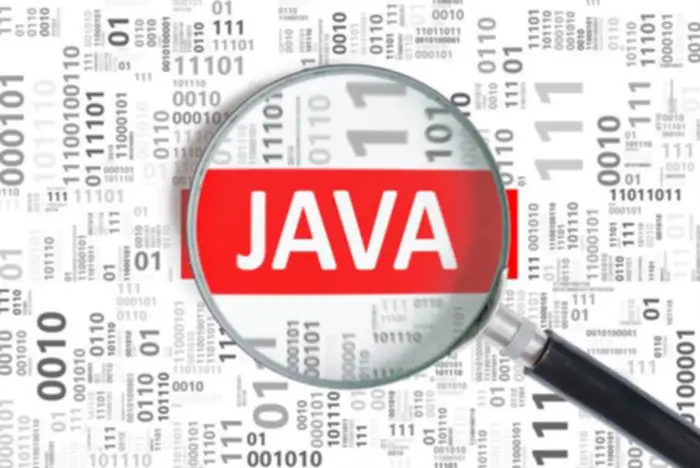Container Orchestration: A Newbie’s Information
Rancher allows developers to create Kubernetes clusters with the Rancher Kubernetes Engine (RKE) or with other cloud Kubernetes companies, such as GKE and EKS. With SUSE Rancher, developers can import and handle present Kubernetes clusters from any Kubernetes distribution. This vary of companies simplifies the container automation and administration course of and eases the method of delivering cloud providers. Serverless computing is an application improvement and execution model that permits builders to build and run software code with out provisioning or managing servers or back-end infrastructure. The capability Container Orchestration to create containers has existed for decades, nevertheless it grew to become widely out there in 2008 when Linux® included container capabilities within its kernel. It grew to become much more important after the arrival of the Docker open supply containerization platform in 2013.

Leading Container Orchestration Instruments For 2024
Microsoft’s Azure Service Fabric is a Platform-as-a-Service answer that lets builders concentrate on business logic and software growth by making container deployments, packaging and management so much simpler. Service Fabric lets companies deploy and handle microservices throughout distributed machines, allowing the management of both stateful and stateless providers. Orchestration instruments provide the framework for automating containerized workloads.

Kubernetes Dashboard: Prime 5 Options You Must Know

The course of involves deploying, scaling, networking, and maintenance are all elements of orchestrating containers. Kubernetes has become more and more necessary for growing and scaling machine learning and deep learning algorithms. If you aren’t a trained data scientist, containers can help simplify management and deployment of fashions. You don’t have to build a model from scratch each time, which could be advanced and time consuming. Container orchestrators automate the entire above activities, utilizing a declarative strategy. You define a “desired state” of your containerized utility, sometimes utilizing a configuration file, and the orchestrator continuously works to achieve that desired state, given the available sources.
What’s Container Orchestration?
Containers are light-weight, executable software parts that combine utility source code with all the working system (OS) libraries and dependencies required to run the code in any environment. It has a easy set up process, is flexible, and aims to get rid of the complexities surrounding orchestration with other instruments. Some of them are the Google Kubernetes Engine (GKE), Azure Kubernetes Services (AKS), and so on. When a team is making updates to an software, they will roll out a new model of the applying across the cluster. This will reduce downtime and be sure that the applying is on the market through the replace process.
Kubernetes Safety For Dummies
Orchestrators may also be used to deploy purposes in a microservices structure, during which software is broken up into small, self-sufficient services, developed using environment friendly CI/CD pipelines. It uses a serverless mannequin where containers and different infrastructure elements are created automatically, by inspecting the workloads you deploy. It helps all flavors of Kubernetes, together with managed providers and your individual self-hosted clusters. Several different OpenShift editions are available, together with each cloud-hosted and self-managed variations.
It works between the applying layer and the OS, making deploying and managing functions in large-clustered environments more straightforward and environment friendly. Kubernetes helps manage complex purposes that comprise a quantity of impartial providers that must be hosted at scale. The Kubernetes API allows for the automation of a number of duties related to provisioning and management.

While containers assist us bundle applications for easier deployment and updating, we’d like a set of specialised instruments to manage them. Container orchestration takes the containerization course of to a whole new degree by introducing automation and simplifying the method. It’s a comprehensive container platform that provides safe, scalable, and sturdy options for containerized purposes. At its core, Kubernetes orchestrates containers by scheduling them onto appropriate nodes within a cluster, ensuring optimum useful resource utilization and application availability. It abstracts away the complexities of managing particular person containers and their dependencies, providing a declarative strategy to defining software configurations and desired states.
- Orchestration instruments present a framework for automating container workloads, enabling DevOps teams to handle the lifecycles of their containers.
- Kubernetes can automatically expose a container to the web or to different containers through the use of a Domain Name System (DNS) name or IP tackle to discover services.
- Firstly, adopting cloud-native architectures and microservices has led to the proliferation of containerized functions, driving the need for efficient orchestration mechanisms to handle these distributed workloads.
- The last tier is Platform Plus, which incorporates additional administration and security measures for essentially the most demanding conditions.
Containers effectively guarantee that these purposes run thesame way anyplace, allowing you to shortly and easily reap the benefits of allthese environments. Mesos is a cluster administration software developed by Apache that may effectively perform container orchestration. The Mesos framework is open-source, and might easily provide resource sharing and allocation across distributed frameworks.
Kubernetes or different container orchestrators may not be suitable for all purposes. Containerization sometimes favors utility architecture that doesn’t require extended persistence of utility state or consumer classes. If a container orchestrator needs to handle numerous long-running user sessions, it might have limited capacity to steadiness and scale workloads.
This proactive approach to fault detection and remediation helps reduce downtime and ensures the reliability of containerized workloads. In order to make these individual pieces work as one utility, they should speak to one another. So, instead of focusing just on the code, you need to begin taking care of networking and communication between microservices. You additionally need to build every microservice individually, and when you select to have completely different languages and frameworks, the constructing process won’t be the same for all of them. But you’ll be able to focus on all the advantages of microservices and offload most of these additional tasks by using a container orchestration platform.
Multi-cloud container orchestration is the utilization of a tool to handle containers that transfer across multi-cloud environments instead of operating in a single infrastructure. However, if one of the options — let’s say new registration — has more hits and needs more capacity at one time, whereas at one other time, the login feature is accessed extra — that can’t be managed dynamically. The host operating system allocates a fixed storage and RAM for every service which, as quickly as assigned, cannot be reallocated from one useful resource to a different. Further, something that works in the improvement surroundings can break within the testing, staging, and even production, because of points aside from code — like version incompatibility or dependency points.
And their user-friendly and advanced automation is anticipated to improve, especially now with the rising demand for scalable AI apps. With fewer assets than digital machines, containers cut back infrastructure wants, overhead prices, and handbook intervention. Mesos is a popular selection for operating Docker containers in manufacturing environments as a result of it’s straightforward to set up and manage. Still, it requires you to use a separate server out of your utility container (which could be problematic if you use multiple containers). Within the same pod, containers can share the native network (and IP address) and resources while nonetheless sustaining isolation from containers in different pods.
Now, Nomad is a container orchestration software that provides flexible cluster management and the scheduling and deploying of tasks among the many employee nodes in a cluster. Worker nodes throughout the Kubernetes cluster perform actions facilitated by the Kubernetes API. They can be utilized to run containerized purposes and can also handle networking between functions with and outside the cluster.
It can cluster physical or digital hosts, similar to running Linux containers, for example, and then provide a framework for managing these clusters. Nomad deploys and manages containers and non-containerized applications on various infrastructures at scale in on-site or cloud environments. Beyond containers, Nomad handles the orchestration of any application and provides bin packing to enable efficient area management and job scheduling. In conclusion, Kubernetes stands out within the container orchestration panorama for its comprehensive capabilities, scalability, and price efficiency.
Apache Mesos uses the Marathon orchestrator and was designed to scale to tens of 1000’s of bodily machines. Mesos is in production with some massive enterprises corresponding to Twitter, Airbnb, and Netflix. An application running on prime of Mesos contains one or more containers and is known as a framework. Mesos offers assets to every framework, and every framework should then determine which to merely accept. Mesos is less feature-rich than Kubernetes and should involve further integration work. Docker Swarm is an open-source container orchestration framework that produces a single, virtual Docker host by clustering multiple Docker hosts collectively.
Transform Your Business With AI Software Development Solutions https://www.globalcloudteam.com/ — be successful, be the first!
